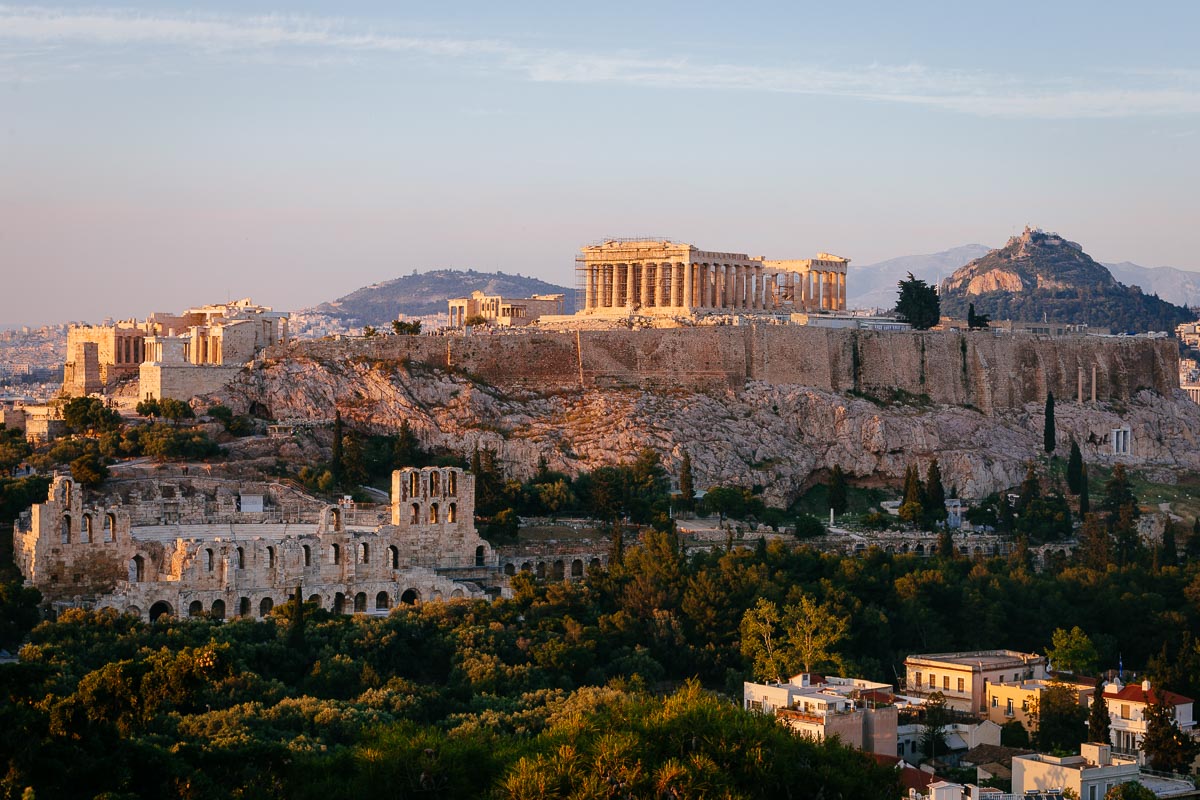|
Group attractions by:
|
Culture and Education : Chapels / Monasteries
|
|
Culture and Education : Galleries / Museums
|
|
Culture and Education : Mausoleums / Cemeteries
 |
 Kerameikos
Kerameikos
The 11 acre archaeological site of the Kerameikos comprises part of the Themistoclean Wall, the Dipylon Gate and Sacred Gate, the Pompeion, the burial enclosure of the Stele of Hegeso, the Demosion Sema, and other well-known monuments.
|
|
|
|
Culture and Education : Temples / Shrines
|
|
Culture and Education : Theatre / Performing Arts Center
 |
 Odeon of Herodes Atticus
Odeon of Herodes Atticus
The Odeon of Herodes Atticus in Athens is a Roman period stone amphitheatre that seats 5,000 people, and today is still used as a venue for outdoor performances in the summer.
|
|
|
|
Landmarks and Attractions : Archeological / Historic Sites
 |
 Acropolis
Acropolis
Perched atop the rocky remnants of an extinct volcano, the Acropolis is the greatest and finest sanctuary of ancient Athens, dominating the centre of the modern city.
|
|
 |
 Ancient Agora
Ancient Agora
The Agora was the heart of ancient Athens, the focus of political, commercial, administrative and social activity, the religious and cultural centre, and the seat of justice.
|
|
 |
 Olympeion
Olympeion
Between the Acropolis and the Ilissos river in southern Athens lies the archaeological site of the Olympeion, the sanctuary of Zeus, king of the Olympian gods.
|
|
 |
 Marathon
Marathon
Marathon was the site of a famous battle that took place in 490 BC, wherein the Greeks astonishingly defeated the invading force of Persia, then the most powerful empire in the world.
|
|
 |
 Roman Agora
Roman Agora
To the north of the Acropolis and to the east of the original classical Greek agora lies the Roman Agora of Athens, a large building comprising a spacious rectangular courtyard surrounded by stoas, shops and storerooms.
|
|
|
|
Landmarks and Attractions : Historic Buildings / Monuments
 |
 Hadrian’s Arch
Hadrian’s Arch
Hadrian’s Arch is a monumental gateway lying on an ancient road that led from the old city of Athens to the new Roman section built by Roman Emperor Hadrian.
|
|
|
|












